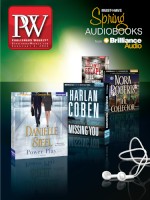Despite temperatures in the low teens, a messy Saturday afternoon blizzard, and numerous reports of weather-related travel snarls, 12,207 people attended the 2014 American Library Association Midwinter Meeting, which ran from January 24–28 in Philadelphia—up from 10,981 at the Midwinter Meeting in Seattle last year, and the highest total since the 2005 event in Boston, which drew 13,232 attendees.
This year’s Midwinter Meeting was the third in a row to post an attendance increase—although, notably, paid registrations this year (6,464) were down slightly from last year’s event. Vendor participation, on the other hand, surged in 2014, with 3,800 vendors in Philadelphia, up from 3,144 in Seattle.
The dip in paid registration was not unexpected—there are three major ALA shows within the first six months of 2014. The biannual Public Library Association meeting will be held in Indianapolis, Ind., in March and the ALA annual meeting is set to take place in Las Vegas in June. In addition, the bad winter weather deterred on-site registrations, which were significant at past shows in Philadelphia.
Those who did make it to the Philadelphia conference were treated to a packed program, with more than 1,800 events over five days, including author talks, professional sessions, and, of course, the committee work that dominates much of the meeting.
As in past years, the highlight of the conference was the announcement of the ALA Youth Media Award winners, which took place on January 27. Kate DiCamillo took home the 2014 Newbery Medal for her novel Flora & Ulysses: The Illuminated Adventures (Candlewick); Brian Floca won the 2014 Caldecott Medal for Locomotive (S&S/Atheneum/Jackson). Marcus Sedgwick won the 2014 Printz Award for Midwinterblood (Roaring Brook).
The professional program once again included a full slate of presentations on a range of topics, from library management to technology, copyright, and of course, e-books.
One of the most well-attended events was a session on the ReadersFirst Working Group, a coalition aimed at helping librarians be more effective e-book providers. Led by Michael Santangelo, the ReadersFirst project coordinator and head of technical development for the New York Public Library/Brooklyn Public Library tech services group, BookOps, and coalition member Rachel Wood, materials division chief for the Arlington (Va.) Public Library, the session focused on methodology and next steps for the project.
At another session, Dan Cohen, executive director of the Digital Public Library of America, offered an update on the organization’s progress since its launch last April. Cohen reported that the initiative is moving along with great “momentum,” with several new partnerships and a distinct book interface in the works.
Pew executive director Lee Rainie was on hand to detail the findings of a recent library-focused survey. At the session, Rainie announced plans to develop a “What type of library user are you?” quiz, which will be offered as a widget, hopefully in time for the ALA Annual Conference in Las Vegas.
At a two-hour SPARC/ACRL forum, a standing-room only crowd heard about major progress made in the scholarly publishing and research domains—highlighted by the recent passage of a public access requirement for some federal agencies as part of a recent federal omnibus bill.
E-book Progress
The e-book-lending issue was also prominent at this year’s Midwinter Meeting. At a lively program hosted by the ALA Digital Content Working Group, co-chair Sari Feldman, executive director of the Cuyahoga County (Ohio) Public Library, summarized the progress made by the group last year. “We now have all of the Big Five publishers working with libraries,” she said. “There is still a lot of work to be done, but we’re very excited about the ground we’ve covered.” The most striking change over the group’s two-plus years of work, Feldman said, has been the “change in the temperature” of the talks between libraries and publishers. “Questions previously were whether publishers should have library e-book lending,” she said. “The question now is how to do it. And there is much more openness and dialogue.”
The session’s featured speakers included Ginger Clark, a literary agent at Curtis Brown Associates, and Peter Brantley, director of scholarly communications at Web startup Hypothes.is (and contributing editor at PW). In her talk, Clark stressed that authors are delighted to work with libraries, but that agents want to ensure that their clients get a fair cut of e-book revenue generated by library programs.
Brantley then surveyed the future, urging librarians to look past the current e-book market to the ways in which digital tools are changing authorship, including self-publishing, and how libraries can support authors in their local communities. “There is so much energy focused on getting books from the Big Five, and under what terms and what prices and how many copies, but the fact of the matter is that there is a whole new world of publishing exploding right before our eyes, and we’re not doing anything about it in any kind of concerted way,” Brantley cautioned. “I think we need to do that.”
In the exhibit hall, meanwhile, there was a noticeable uptick in the number of vendors offering publishing services to libraries—including firms like Ingram, whose IngramSpark platform recently enabled the Williamson County Public Library (in Franklin, Tenn.) to launch a publishing program. Google also made its return to ALA: the company was on hand to demo Google Glass for librarians, many of whom waited in line for a chance to try the new technology. As for first impressions, most librarians found the wearable device cool, if still a bit unwieldy. “I feel like I’m looking at the future,” one attendee said.
For more comprehensive coverage of the conference, visit the PW Libraries page.



 Volume 261
Issue 05
02/03/2014
Volume 261
Issue 05
02/03/2014





